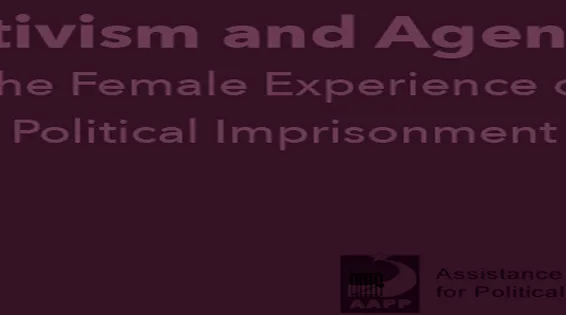Activism & Agency: The Female Experience of Political Imprisonment
08 March 2018

Executive Summary
Around the world, the overall incarceration rate has been steadily rising, with the incarceration rate of women up by 50% in the last few decades. Much of this increase is due to policy changes worldwide that encourages pre-trial detention, and has made incarceration the main source of recourse in the criminal justice system. In Southeast Asia, and Burma specifically, the numbers of incarcerated women is higher than the global average, which has made this population more visible in the prison system. Despite this visibility, treatment of this group has remained below international standards and female prisoners are left in more vulnerable states than their male counterparts at every part of their trial, sentencing, and time incarcerated due to the organization of the justice system. This inherent discrimination has led to a lack of healthcare and safety standards for women while incarcerated, and fewer vocational prospects after release.
Currently, there are a few ways the treatment of detained or incarcerated persons, especially female prisoners, is regulated. At the international level, it is through three of the main treaty bodies: the International Covenant on Civil and Political Rights (ICCPR), UN Convention Against Torture (UNCAT), and the Convention on the Elimination of All Forms of Discrimination against Women (CEDAW). Burma has failed to ratify the ICCPR, as well as the UNCAT, which has harmed the protection of all prisoners, but more greatly affected regulations for female prisoners. Specific regulations for prisoners can be found in the Basic Principles for the Treatment of Prisoners (Basic Principles) and the Standard Minimum Rules for the Treatment of Prisoners (SMRs). Finally, the UN Rules for the Treatment of Women Prisoners and Non-custodial Measures for Women Offenders (Bangkok Rules) addresses the unique needs of female prisoners. Burma’s lawmakers are attempting to bring the treatment of women and the protection of prisoners in-line with international standards through upcoming draft laws. These laws, however, fail to adequately protect these groups.
A smaller section of incarcerated women, who have long been a part of Burmese society but fail to be recognized by the Government, are female political prisoners. The profile of a female political prisoner is inherently different from that of a criminal female offender because female political prisoners tend to have and use agency – both during sentencing, and as a way to reintegrate into society. The report explores the experiences of nine former female political prisoners, and how they have leveraged their agency, and continued their activism while behind bars and after release.
Despite the challenges they have confronted while incarcerated, and after their release, female political prisoners are not silent victims of the system. They continue to advocate on behalf of political prisoners, as well as criminal offenders, during their time incarcerated, and long after. In Burma, both female political and criminal prisoners would benefit greatly through improved prison conditions, and ratification of international treaties. Although female political prisoners have been able to use their influence and independence throughout their time incarcerated, as well as while building new lives after release, the Government has a duty to protect their rights while in correctional institutions and ensure their livelihoods after they regain freedom. Executive
Download full report in English HERE.
အစီရင္ခံစာျမန္မာဘာသာကုိ ဤေနရာတြင္ ရယူႏုိင္သည္။
Announcements
28 February 2025
Asian NGO Network on National Human Rights Institutions , CSO Working Group on Independent National Human Rights Institution (Burma/Myanmar)
Open letter: Removal of the membership of the dis-accredited Myanmar National Human Rights Commission from the Southeast Asia National Human Rights Institution Forum

Progressive Voice is a participatory rights-based policy research and advocacy organization rooted in civil society, that maintains strong networks and relationships with grassroots organizations and community-based organizations throughout Myanmar. It acts as a bridge to the international community and international policymakers by amplifying voices from the ground, and advocating for a rights-based policy narrative.